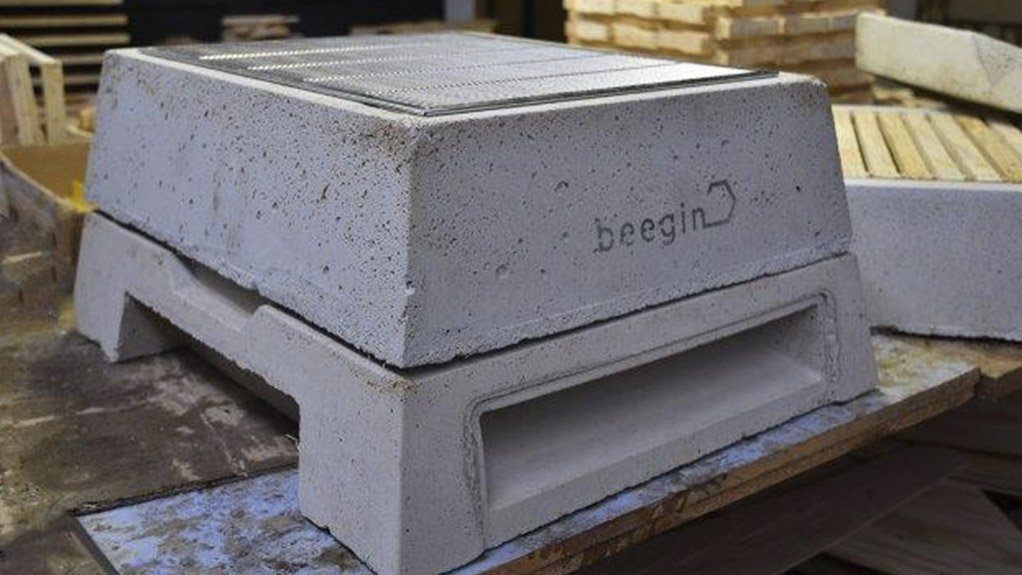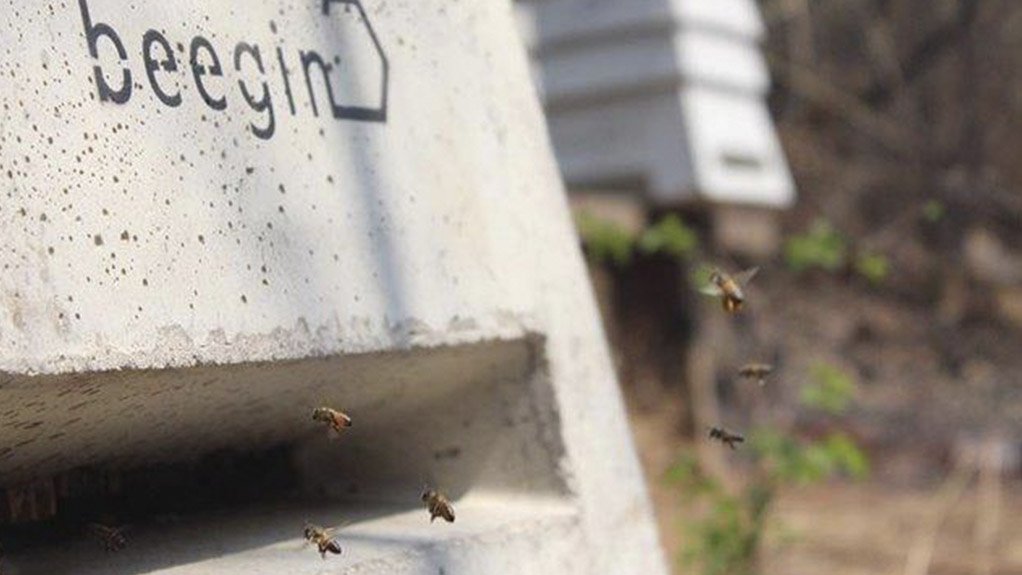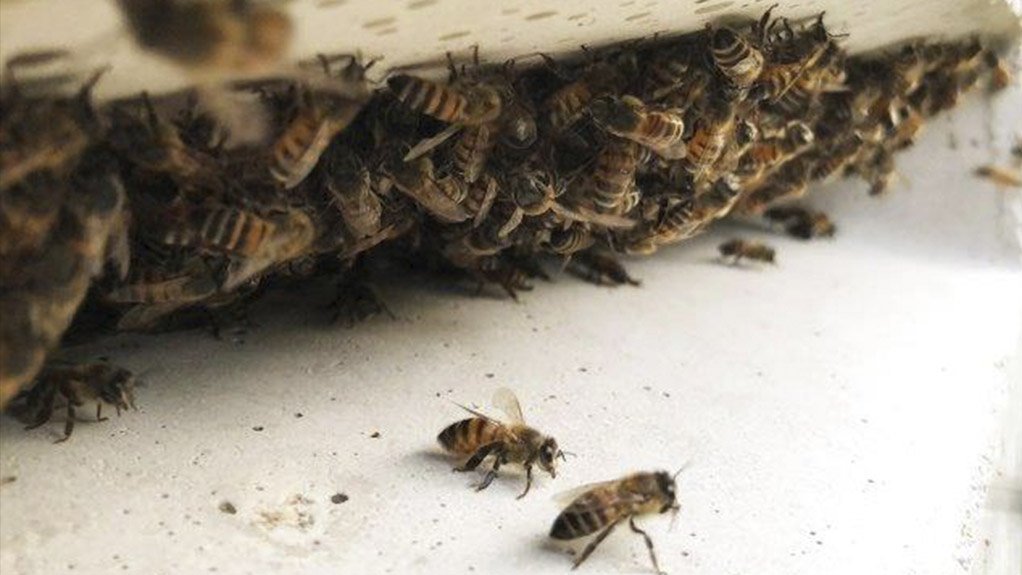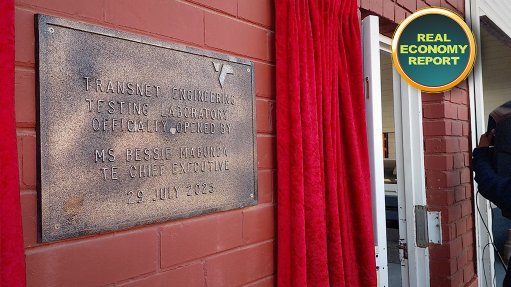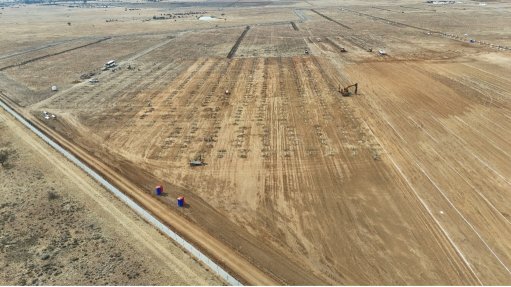Unique beehive construction with Pratliperl®
This article has been supplied.
The ultra-lightweight, thermally-insulating and fireproof aggregate Pratliperl® from Pratley, traditionally used for plasters and screeds, has now also proven to be a key component in an ideal admixture for building concrete beehives.
Industrial designer Ivan Leroy Brown established Beegin as a university research project in 2016. The aim was to find a solution to the problems faced by beekeepers, such as the loss of beehives due to theft, vandalism, fires, honey badgers and weathering. The focus of the research became finding a suitable alternative to wood for beehive construction. The result was a durable, lightweight and cost-effective concrete beehive with a DIY moulding tool kit.
These hives protect beekeepers and bees from hive losses, generating savings that can be used for increasing the apiary size. The moulds also offer a unique opportunity for people to make beehives at home, building up their apiaries and even selling hives to the local community.
The concrete mix design used to make the beehives balances weight, durability, strength, insulation and cost, important factors in successful beehive design. The preferred lightweight aggregate is construction-grade Pratliperl® from Pratley. This is derived from a volcanic glass called Perlite that Pratley processes using a unique proprietary process. The raw material is expanded in special furnaces to create millions of small, well-sealed Pratliperl® beads. Each bead has a small vacuum inside, giving the product its unique thermal insulation properties.
“We prefer Perlite as it is made from a naturally occurring rock; it is fireproof; the particles bond well with cement, creating a strong material despite the lower density; and it is suitably priced,” explains Brown. Each Bee Bunka requires about 110 litres of concrete to make. The mix suggested by Beegin uses 50 litres of lightweight Pratliperl aggregate to 30 litres of sand, 30 litres of cement and 30 litres of water.
Pratliperl® is important for the construction industry to comply with quality standards such as SANS 204, and has been pretreated to enable it to mix with ordinary cement. The thermal insulation properties of a two-leaf (220 mm) external brick wall can be doubled simply by adding 16 mm of Pratliperl® plaster on either side.
Applications range from underfloor insulation and insulated roof decks to lightweight screeds on corrugated iron or concrete roofs, fireproofing structural steel columns, insulating cryogenic tanks, loose-fill thermal insulation in wall cavities and lightweight tile adhesive filler. Pratliperl® is also resistant to spalling under fire conditions, which improves the integrity of structures and enhances health and safety. It can withstand up to 1 250°C without comprising its structural integrity.
Once cured, Pratliperl® has superior strength compared to conventional lightweight concrete. Compatible with cement and other binders, it can be used to produce ultra-lightweight panels, boards, bricks, and blocks that can be cut, nailed, and drilled, highlights Pratley National Sales and Marketing Manager Mark Bell.
As for the Bee Bunka and moulding tools, Brown reports that the swarms they house have performed exceptionally well, outdoing the comparative wooden hives by as much as 200% as measured in honey yield. With over 200 mould sets sold to date, Brown estimates there are now more than 10 000 concrete beehives being used in the field – creating a positive impact in the beekeeping industry.
The production and cost of the concrete beehives were shown to be much easier and cheaper than the wooden versions. In short, lightweight concrete, especially using the thermally insulating Pratliperl® aggregate, was shown to achieve higher desirability along most of the criteria when compared to wood or plastic. The data points to the success of Pratliperl® concrete as a beehive material, given that all of the issues identified during the testing could be solved, concludes Brown.
Comments
Press Office
Announcements
What's On
Subscribe to improve your user experience...
Option 1 (equivalent of R125 a month):
Receive a weekly copy of Creamer Media's Engineering News & Mining Weekly magazine
(print copy for those in South Africa and e-magazine for those outside of South Africa)
Receive daily email newsletters
Access to full search results
Access archive of magazine back copies
Access to Projects in Progress
Access to ONE Research Report of your choice in PDF format
Option 2 (equivalent of R375 a month):
All benefits from Option 1
PLUS
Access to Creamer Media's Research Channel Africa for ALL Research Reports, in PDF format, on various industrial and mining sectors
including Electricity; Water; Energy Transition; Hydrogen; Roads, Rail and Ports; Coal; Gold; Platinum; Battery Metals; etc.
Already a subscriber?
Forgotten your password?
Receive weekly copy of Creamer Media's Engineering News & Mining Weekly magazine (print copy for those in South Africa and e-magazine for those outside of South Africa)
➕
Recieve daily email newsletters
➕
Access to full search results
➕
Access archive of magazine back copies
➕
Access to Projects in Progress
➕
Access to ONE Research Report of your choice in PDF format
RESEARCH CHANNEL AFRICA
R4500 (equivalent of R375 a month)
SUBSCRIBEAll benefits from Option 1
➕
Access to Creamer Media's Research Channel Africa for ALL Research Reports on various industrial and mining sectors, in PDF format, including on:
Electricity
➕
Water
➕
Energy Transition
➕
Hydrogen
➕
Roads, Rail and Ports
➕
Coal
➕
Gold
➕
Platinum
➕
Battery Metals
➕
etc.
Receive all benefits from Option 1 or Option 2 delivered to numerous people at your company
➕
Multiple User names and Passwords for simultaneous log-ins
➕
Intranet integration access to all in your organisation



